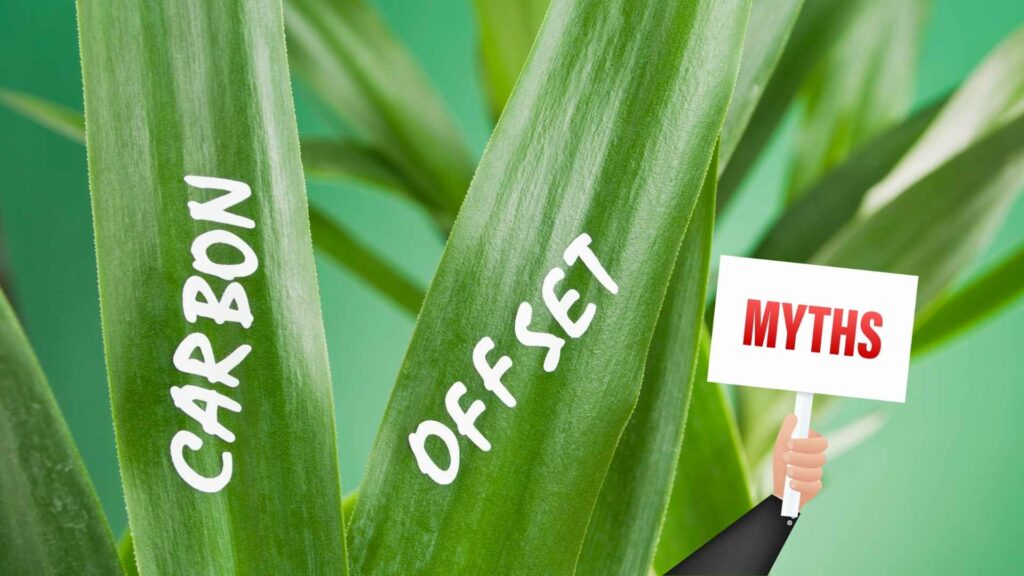A recent Ecotextile article titled UK Companies ‘too reliant on carbon offsets’ points out a critical flaw behind the system of organizations reducing their own greenhouse gas emissions by purchasing low-quality carbon offsets. It’s an easy to understand behavior of following the easiest path rather than implementing real change in the way things are done in-house. Unfortunately due to the exploding demand for carbon offsets, the offset market has been flooded by subpar offerings.

The article reports a few key recommendations from the Climate Change Committee (UK’s most prominent governmental advisory body for managing the environment):
- Focus on direct business emissions reductions
- Raise the integrity of available carbon credit projects
- Continue to support the role voluntary carbon markets can play in the UK alongside with other measures
We have some thoughts for encouragement on the first suggestion from CCC as well as a proposed solution that addresses the textile industry and specifically the coloration aspect of processing fabrics.
Why You Should Implement Actual Carbon Reduction Practices
It’s worth it!!! That’s the reason why every organization should take serious steps to reduce their carbon footprint. Why is it worth it? Here are a few points to consider:
- Company morale will improve – although it might not immediately reflect on your balance sheet, the improved morale of your employees – when they realize that their organization is taking real steps to address climate change – will equate to higher productivity, better retention rates, and improved quality of work execution.
- The alternatives are available – by now every industry has a dedicated sub-industry that is focused on offering real solutions to reduce their carbon footprint. It’s almost a certainty that every industry has a dedicated group of media outlets that serve as the environmental watchdogs. These reporters are there to point out the flaws and abuses within your industry, but more importantly they do the good work of shining light on available solutions specific to your business. Stay on top of their coverage and build a plan to eventually become one of the organizations that is highlighted as a model to follow rather than a villain.
- You will invest now, or pay more later – as we’ve highlighted in our other articles changing our production practices is inevitable. Companies have a choice to start investing in cleaner production practices now, or be forced, either by nature or governments, to implement low carbon production practices. As is true with handling any chronic condition, the earlier you start tackling the problem, the lower the associated costs of limiting the damage and the higher the chances of making it through the problem.
Low Carbon Coloration Solution for the Textile Industry
As a follow up to the “Why” of implementing low carbon production solutions, we offer the “How” that is specific to the textile industry. Here we want to highlight our own NTXTM CooltransTM, but rather than a hard sell of our technology, we want to highlight the qualities that you might want to look for selecting a low carbon dyeing or low carbon printing solution:
- Lower Energy and Water Use – the enormous fresh water requirements in the processing of fabrics are often highlighted as the biggest negative of traditional fabric coloration. The fact is that whenever large amounts of water are in use, they also require large amounts of energy to heat the water to execute the coloration process. There are alternatives that can save up to 90% of water use and over 60% in energy use.
- Eliminate Wastewater – the best way to save energy associated with water treatment is to avoid creating wastewater as a side effect of your production processes. This also eliminates the potential risk of polluting the local waterways. The latest low carbon coloration technologies are also much more precise in applying ink to fabrics and use much more environmentally friendly dyes and inks. The end result is the elimination of wastewater and the necessity to build the associated water treatments plants.
- Eliminate Scrap Waste – another key factor in saving energy is producing exactly what you need and not a yard more, and there is an associated corollary of getting it right the first time. Unlike traditional coloration technologies which are imprecise in color application, and wasteful in their use of dyes and inks, the latest coloration technologies are able to precisely deliver the exact amount of ink required to the exact location where it is needed. This ensures dyes and inks are not wasted and the resulting fabric matches the specifications perfectly every time which in turn eliminates scrap due to subpar quality.
We know implementing change is hard, but not implementing change will result in much bigger hardships in the end. While taking the easy way out may seem prudent, please make sure that your choices are not just superficial but move your organization forward towards more sustainable operational practices.

